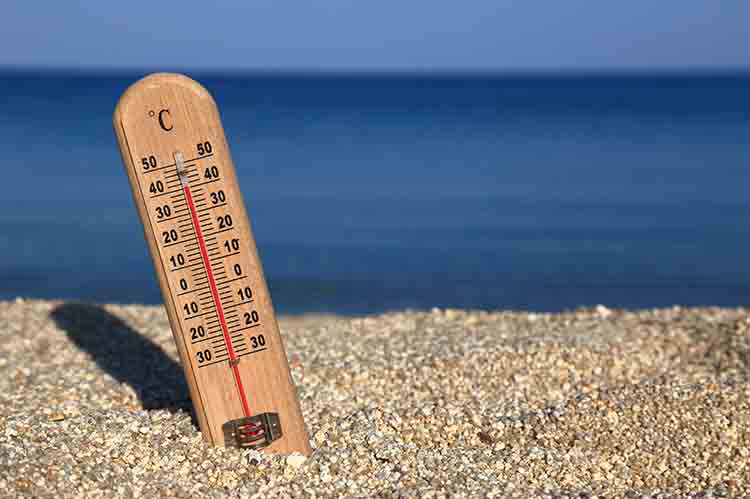 When summer temperatures soar, roofing maintenance is not on anyone’s list of fun things to do. But the many factors that can damage a roof don’t take the summer off, so you can’t, either. You do, however, have an obligation to offer your workers as much protection as you can. While there are no specific OSHA regulations that cover heat-related illness, several companies have been cited under the General Duty Clause, which requires employers to provide safe working environments.
When summer temperatures soar, roofing maintenance is not on anyone’s list of fun things to do. But the many factors that can damage a roof don’t take the summer off, so you can’t, either. You do, however, have an obligation to offer your workers as much protection as you can. While there are no specific OSHA regulations that cover heat-related illness, several companies have been cited under the General Duty Clause, which requires employers to provide safe working environments.
Protect yourself and your workers by making sure everyone thoroughly understands these hot-weather roof safety guidelines:
1. Know How to Cool Off
Teach your employees how to take care of themselves in the heat: Wear loose, light-colored clothing with plenty of ventilation; wear a cap with a brim that covers the face and neck; take frequent shade/water breaks (drinking at least two to four cups every hour); and avoid caffeinated beverages, which increase the rate of dehydration.
2. Understand Your Body
Encourage employees taking daily medication to check with their doctors to find out whether they need to take any additional precautions. Some medications, for instance, increase the risk of sunburn (phototoxicity). Excessive sunlight can cause other medications to react with skin proteins, causing an allergic reaction (photoallergy).
3. Set Expectations and be Prepared
Instruct employees who are unaccustomed to working outdoors in the heat to acclimate gradually. While everyone is susceptible to heat-related illness, workers who haven’t built up a tolerance to heat are even more vulnerable. In 2005, for instance, OSHA investigated 25 incidents of heat-related illnesses. In almost half of the cases, it was the employee’s first day working out in the heat, and, in 80% of the cases, the employee had been on the job for less than a week.
Here are a few general rules to follow on the job site to avoid heat-related illnesses:
- Familiarize employees and supervisors with OSHA’s chart of heat index risk levels, and set the expectation that precautions for each level are to be followed.
- Remind employees that conditions such as direct sunlight, strenuous work, or protective clothing compound heat index risks and require additional precautions.
- Make sure everyone knows how to recognize the symptoms of the various heat-related illnesses and can take appropriate action for each.
- For jobs of longer durations, consider scheduling either extra workers or relief workers to give frequent breaks.
4. Roofing Maintenance Specifics
- When possible, schedule roofing maintenance work for the early morning hours.
- Use sloped roofs to block direct sunlight, working on western-facing slopes in the morning and eastern-facing slopes in the afternoon. This is an easy roof safety tip to implement when maintenance has to be done no matter the temperature outside.
- Because the asphalt coating can soften in the heat, be careful when walking. Wear shoes with traction, and use walkways when possible. When working directly on the surface of the roof is unavoidable, put down a barrier like a drop cloth, carpet squares, or foam cushions.
- Instruct workers who are laying new asphalt shingles to use caution when separating the stacks, as hot temperatures can cause the shingles to stick together. To avoid injury, wear safety gloves and follow the manufacturer’s directions for separating shingles. In very hot weather, it may be necessary to use a hose to spray a stack of shingles with cold water.
- Caution workers that metal surfaces on a rooftop can become hot enough to cause serious burns.
While routine roofing maintenance should be scheduled for the cooler seasons, it’s often not possible to avoid all maintenance during the summer months. If you can’t avoid scheduling employees to work on the roof in extreme temperatures, the next-best option is to give them all of the tools and knowledge they need for roof safety. And, if you’re not going to be on-site, give your supervisors the authority to call a halt to rooftop work when they deem it necessary for employee safety.





